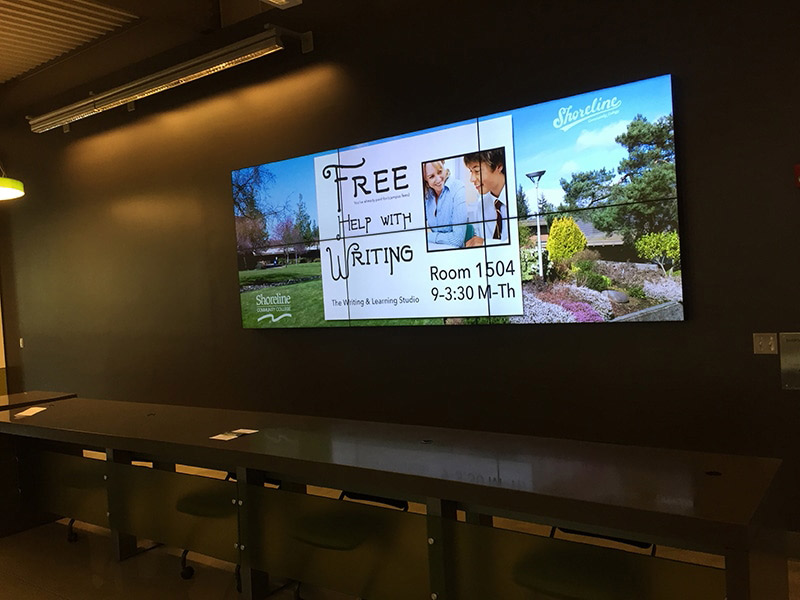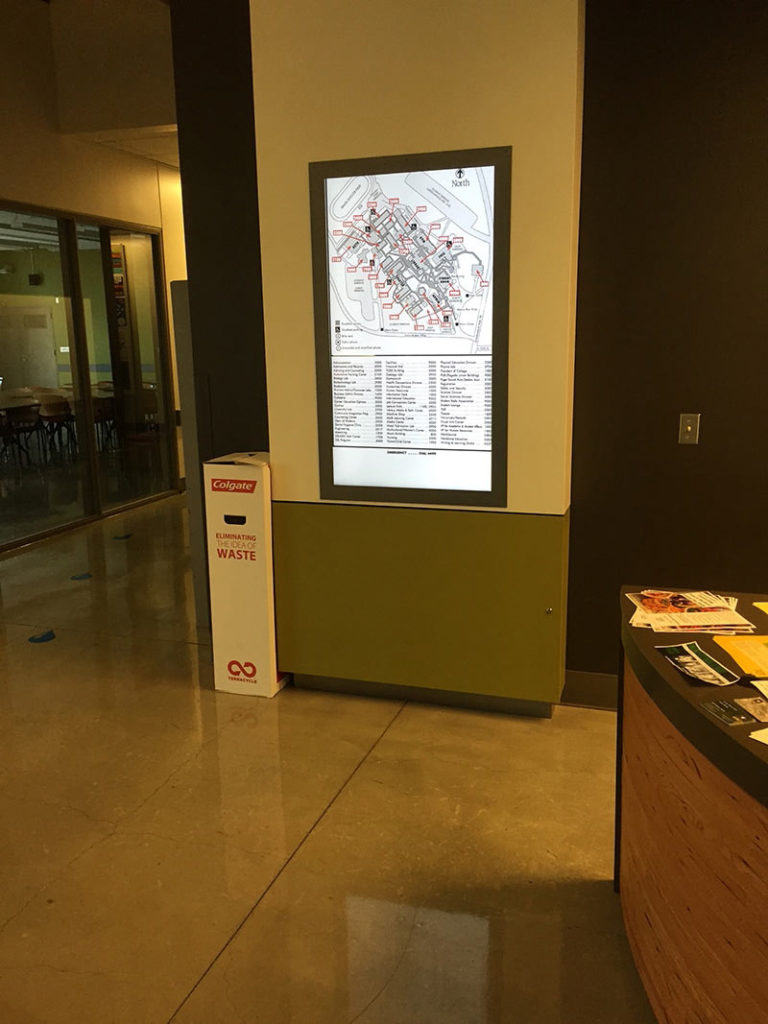When Shoreline Community College in Washington State built their new Pagoda Union Building (PUB) in 2008, they wanted a break from the past. “The old PUB, as we call it, has lots of departments and students clubs and unions. Everyone wants to promote their programs and events”, says Larry Cheng, Media Services Coordinator. “So, there used to be lots of posters, some printed and most were handwritten, that looked pretty bad. When they expired, people didn’t take them down. It really just cluttered up the whole building.” A college digital signage solution seemed the way to go.


“We had a mandate from the president with an eye to the future – nothing that would be obsolete in a year or two,” Cheng explains. “We also wanted something that would automatically disappear when the event was over, and we’re very much into green initiatives – so much paper for printed posters was really a waste. Time is another factor – with paper, you have to design, print, laminate and then tape it up, but with digital signage, you just design it on your computer, have it approved, and distribute to all the buildings immediately.”
To find the right system, Cheng and his team researched more than ten different systems and visited other campuses with digital signage deployments, discussing the pros and cons with the end users. Bellevue Community College recommended AxisTV digital signage software. “The fact that someone else used it and liked it was important, but so was the price point. We had found other systems with similar features, but AxisTV was affordable, not just in the initial cost, but to maintain over time. And AxisTV has some added features others didn’t – like the ability to broadcast live video feeds and target messages to smartphones.
Scalability was another important factor – we started with four media players, now we are up to six, but we know we can go up to 50 channels if needed. In line with the College’s Globalization and Internationalization Initiative, Shoreline has been talking about creating remote campuses in other countries. Since Axis TV is web-based, content creation, approval and scheduling can be done from anywhere in the world.” Cheng and his team have a dedicated server for AxisTV connected to an AMX control computer that also monitors the 17 displays in the PUB. “If anyone disconnects a display to steal it or tamper with it, we would get an alert immediately.” Bandwidth was another selling point for Cheng. “The way AxisTV is configured, a player only talks to the server once every few seconds, so the bandwidth usage is really minimal.”
After doing so much research to get the right system, the next step was integrating their digital signage system with the aesthetics of the college for maximum impact. “We’ve got 17 LCD displays in the student union, two in the Student Services Center, and a dedicated channel for the library. Different channels show different layouts, allowing departments to customize their communications,” Cheng explains. “We show things like PowerPoint slides and videos, local TV weather forecasts, weather satellite images, and Department of Transportation live webcams on roads our students will be travelling on. There is also a ticker at the bottom with reminders for meetings, seminars and other events.”
So, has all this hard work paid off? “Oh, yes. People from outside the campus say it looks high-tech and have even expressed interest in using it themselves. Of course, we are used to it here; we see it as an excellent channel to get information out.”
What does he say to people considering a digital signage solution for their campuses and businesses? “Do it right away. Try to get funding – get the student government on board, talk to other stakeholders and the administration. If possible, create an advocacy group with trend setters and early adopters. And come visit Shoreline. We can show you what we learned.”